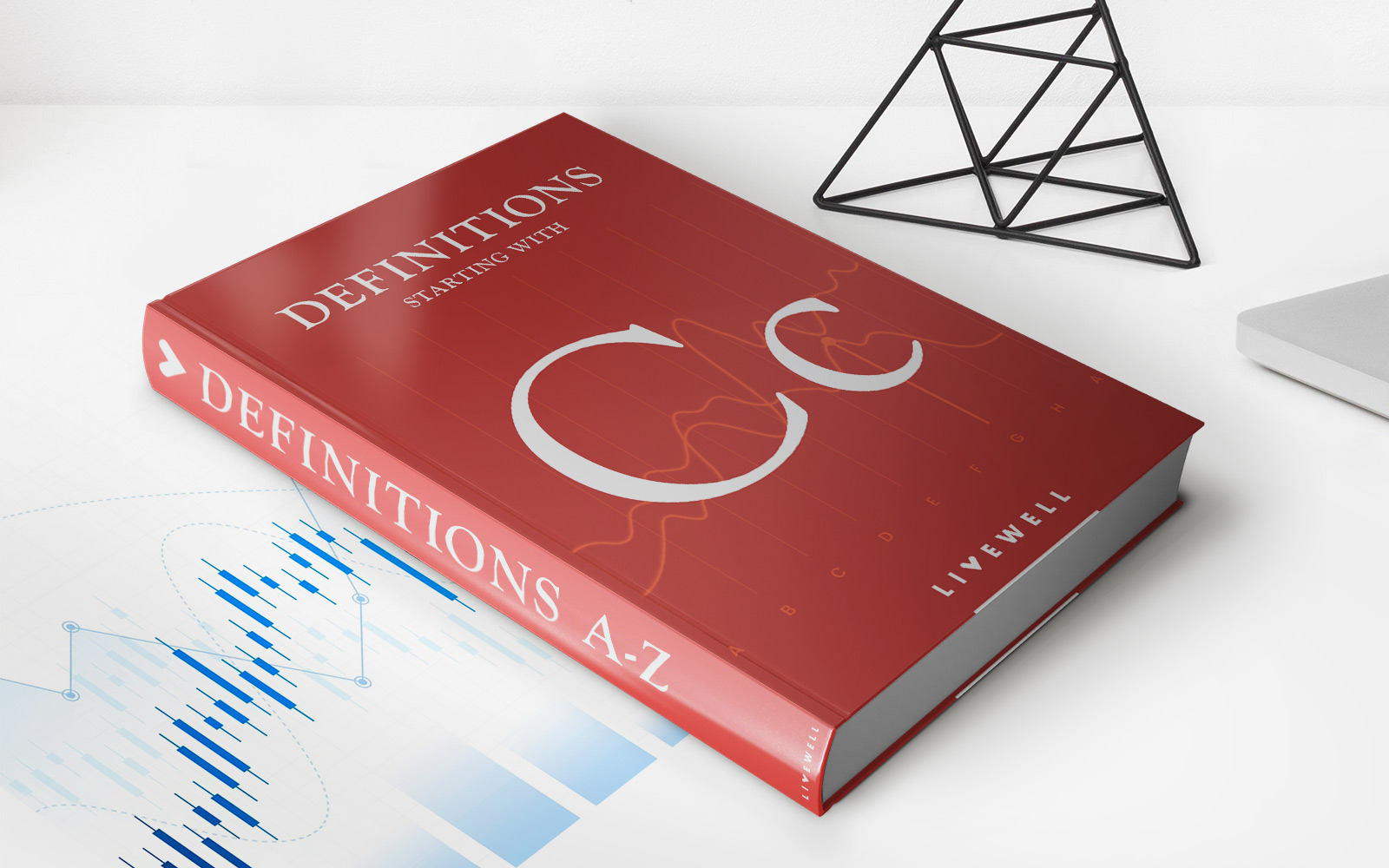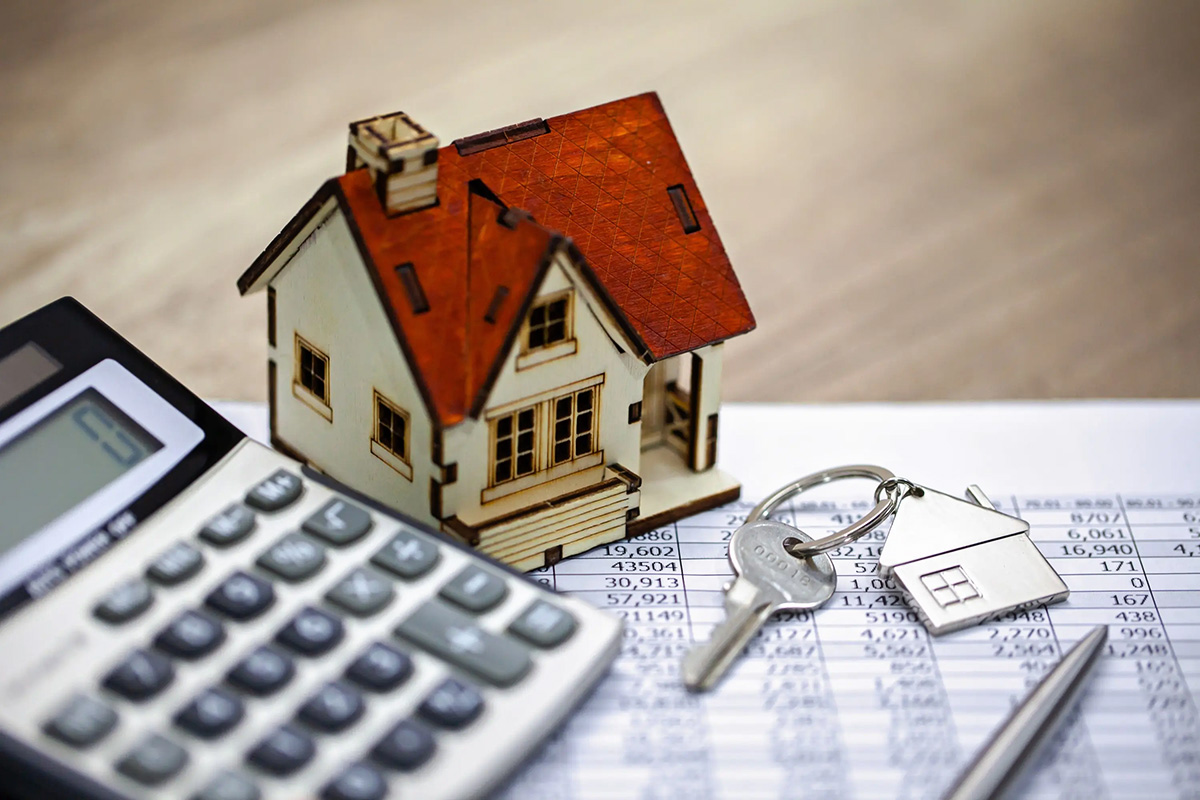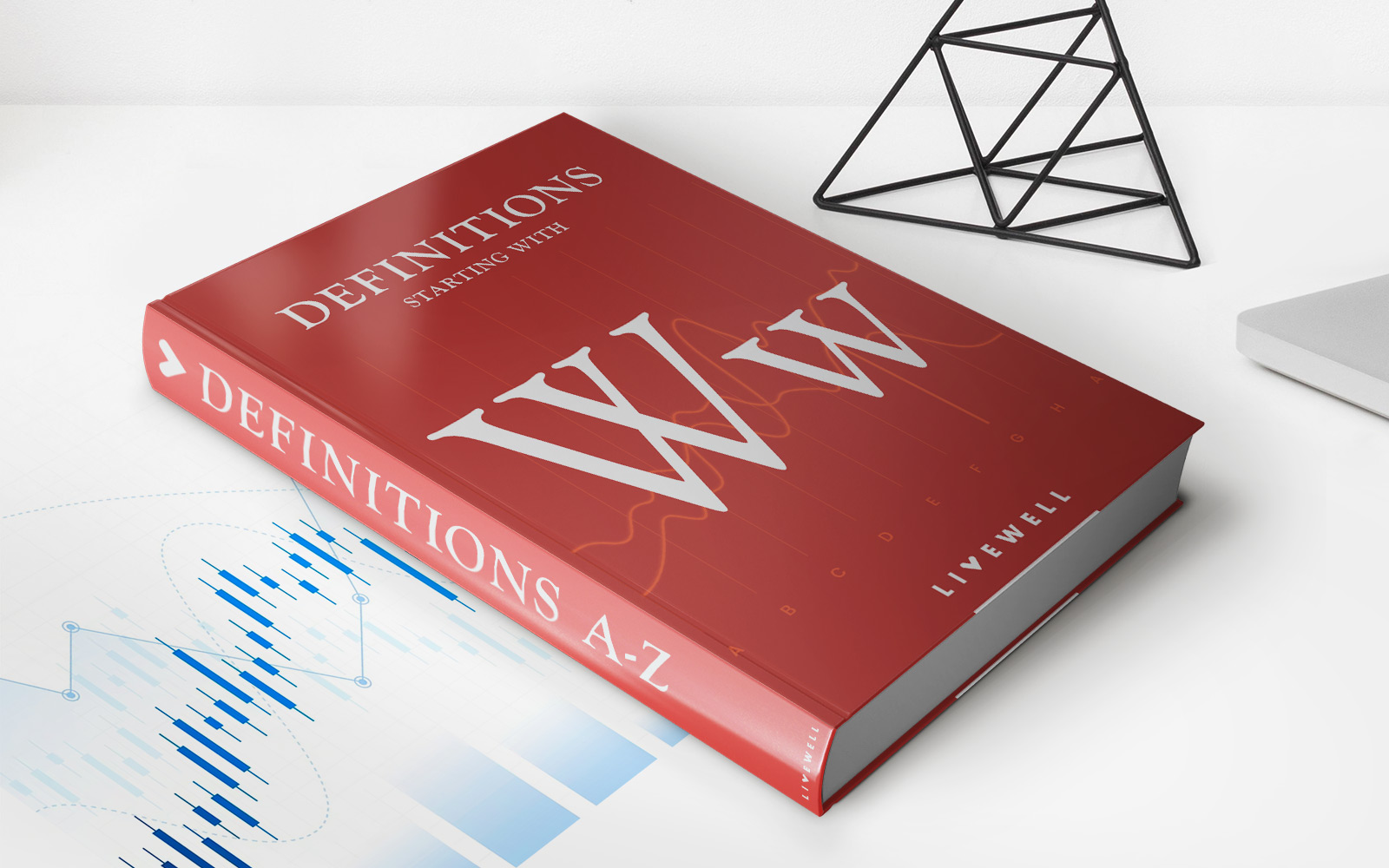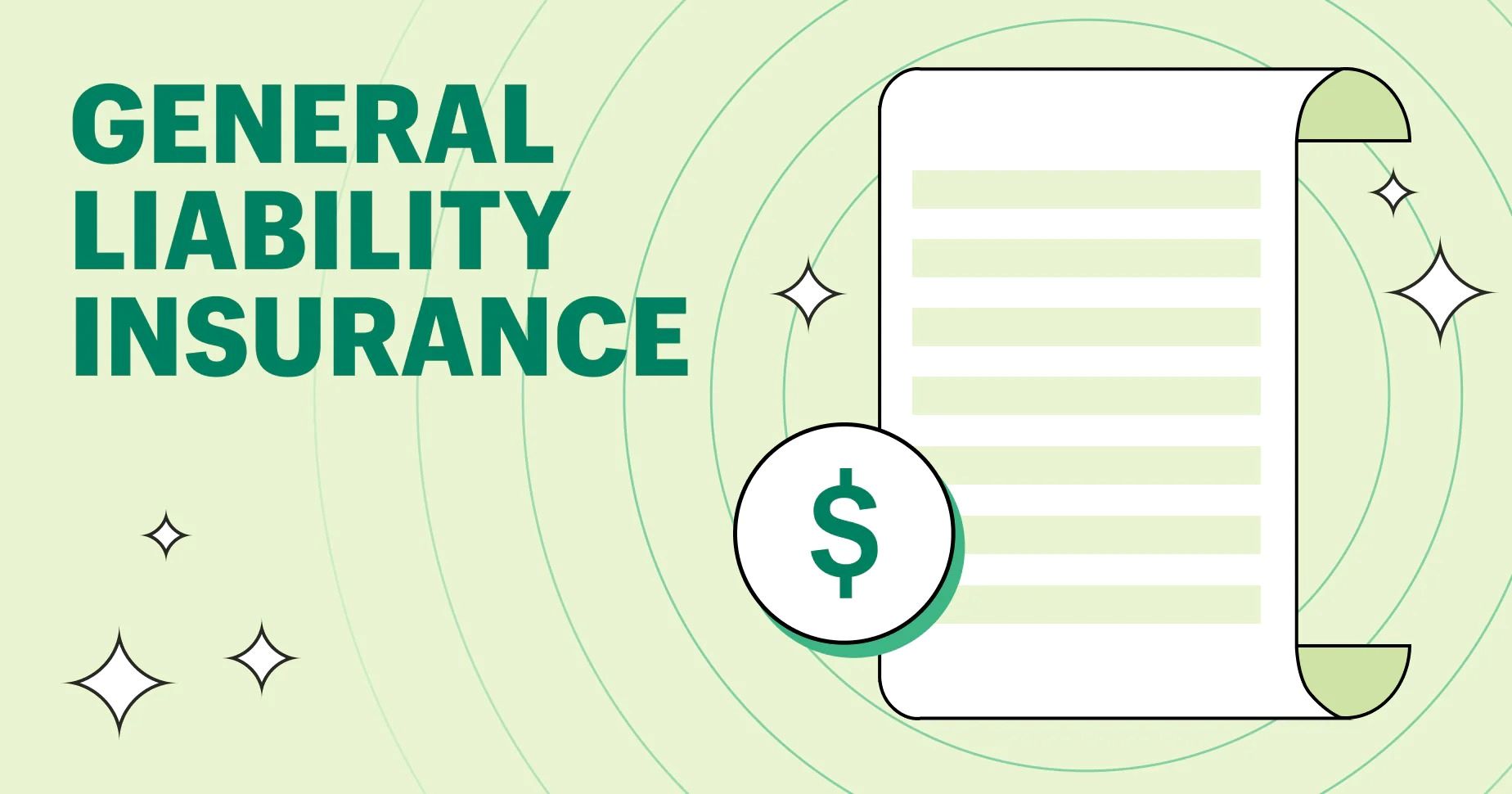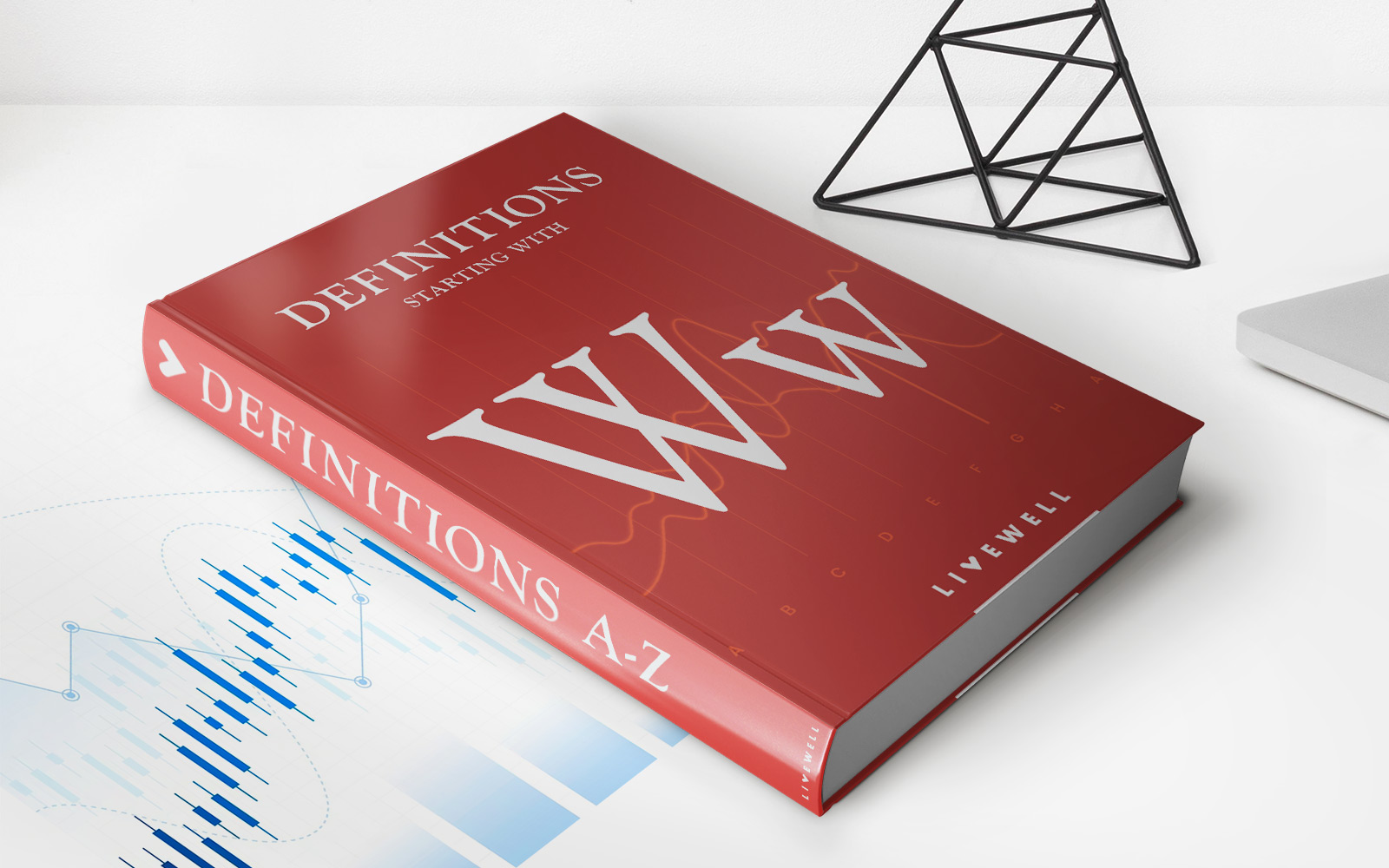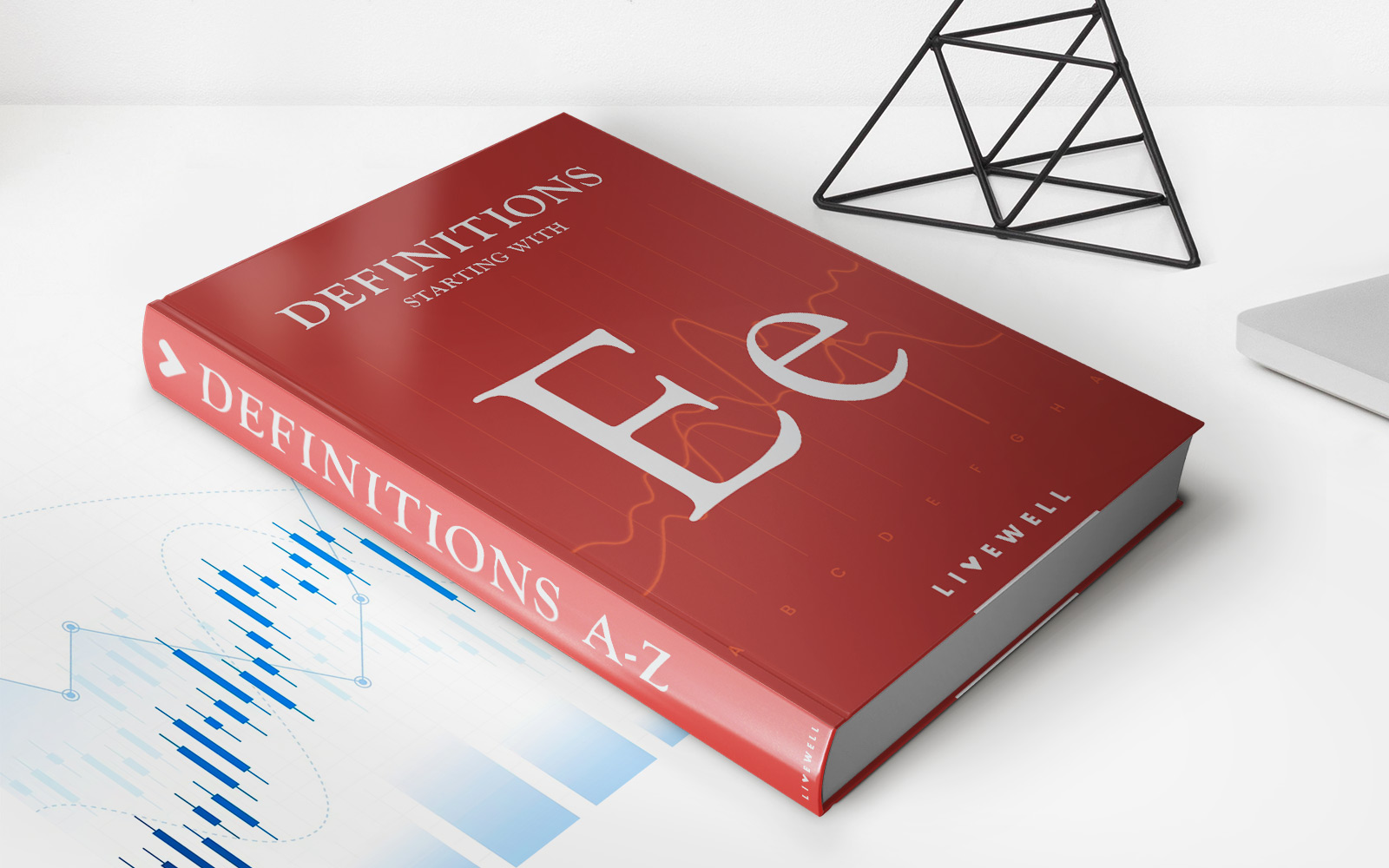Home>Finance>How To Record Insurance Proceeds For Property Damage
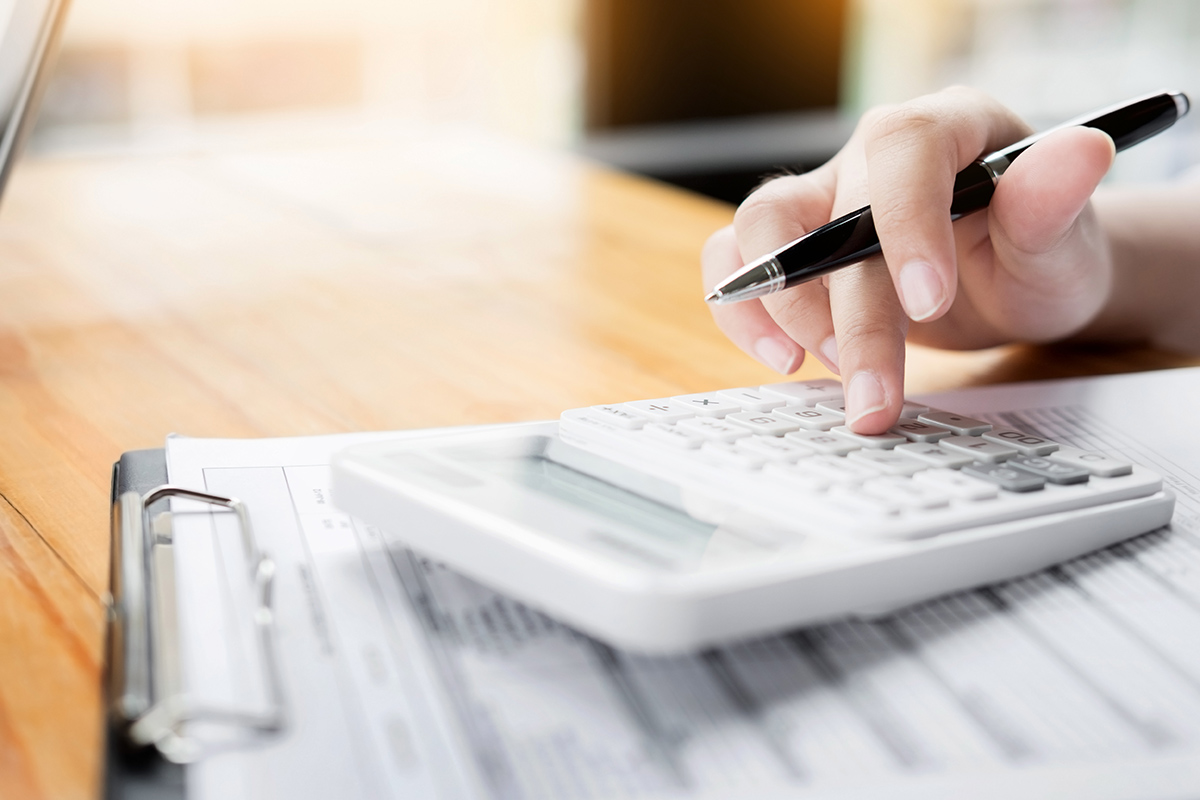

Finance
How To Record Insurance Proceeds For Property Damage
Modified: January 22, 2024
Learn how to accurately record insurance proceeds for property damage and ensure proper financial management in handling insurance claims and reimbursements. Enhance your finance skills and protect your assets with our step-by-step guide.
(Many of the links in this article redirect to a specific reviewed product. Your purchase of these products through affiliate links helps to generate commission for LiveWell, at no extra cost. Learn more)
Table of Contents
Introduction
Welcome to our guide on how to record insurance proceeds for property damage. Dealing with property damage can be a stressful experience, whether it’s due to natural disasters, accidents, or other unforeseen events. In such situations, having a comprehensive understanding of how to manage insurance proceeds is crucial.
When property is damaged, insurance coverage can provide financial assistance to help cover the costs of repairs or replacement. However, it is important to handle the process correctly to ensure accurate recording and reporting of insurance proceeds.
In this article, we will provide step-by-step guidance on properly recording insurance proceeds for property damage. We will discuss the critical aspects of determining insurance coverage, assessing property damage, reporting the damage, and the overall claim settlement process. We will also address the appropriate accounting methods for recording expenses related to property damage and emphasize the importance of proper documentation and record-keeping.
Whether you are a homeowner, business owner, or a professional involved in property management, understanding how to navigate insurance proceeds for property damage is essential to ensure that you receive appropriate compensation and effectively manage your financial records.
Now, let’s dive into the details of how to record insurance proceeds for property damage and gain a clear understanding of the necessary steps and considerations involved in the process.
Understanding Insurance Proceeds
Insurance proceeds refer to the amount of money paid by an insurance company to the policyholder as a result of a covered loss or damage. When it comes to property damage, insurance proceeds are typically provided to help the policyholder cover the costs of repair, replacement, or reimbursement for the damaged property.
Insurance policies vary in terms of coverage and specific details, so it is important to thoroughly review your policy to understand what types of damages are covered, the deductible amount, and any limitations or exclusions that may apply.
Insurance proceeds for property damage can cover a range of scenarios, including natural disasters such as hurricanes, floods, or earthquakes, as well as accidents like fires, vandalism, or theft. The amount of insurance proceeds will depend on the extent of the damage, the coverage limits outlined in the policy, and any deductibles that need to be met.
It is crucial to report property damage to your insurance company as soon as possible after the incident occurs. Most insurance policies have a specific timeframe within which you must report the damage to be eligible for coverage. Failing to report the damage promptly may result in delayed or denied claim settlements.
Before filing a claim, it is essential to document the damage thoroughly. Take photographs or videos of the affected property, gather any relevant supporting documents such as repair estimates or receipts for damaged items, and keep a detailed record of all communication with your insurance company throughout the claims process.
Understanding your insurance policy and the scope of coverage it provides is key to managing the insurance proceeds effectively. By having a clear understanding of the terms and limitations of your policy, you can ensure that you receive the appropriate compensation for the property damage sustained.
Determining the Insurance Coverage
When it comes to determining the insurance coverage for property damage, it is crucial to review your insurance policy to understand the specific details and limitations. The coverage provided will depend on the type of policy you have and the endorsements or add-ons you may have chosen.
Common types of insurance coverage that may apply to property damage include homeowner’s insurance, renter’s insurance, commercial property insurance, and landlord insurance. Each policy type has different provisions and limits, so it is essential to consult your policy documents to ascertain the extent of coverage.
Key factors to consider when determining your insurance coverage for property damage include:
- Perils covered: Review your policy to identify the specific perils or causes of damage that are covered. This can include events such as fire, theft, vandalism, storm damage, and more. Be aware of any exclusions or limitations for certain perils.
- Coverage limits: Your policy will specify the maximum amount the insurance company will pay for property damage. It is crucial to understand these limits to ensure that your claim falls within the coverage boundaries.
- Deductibles: Deductibles are the portion of the claim that you are responsible for paying out of pocket before the insurance coverage kicks in. Familiarize yourself with your policy’s deductible amount and factor this into your budget when assessing property damage.
- Additional endorsements or riders: Some insurance policies offer optional endorsements or riders that provide additional coverage for specific risks. Review your policy to see if you have any additional coverage that may apply to the property damage you have experienced.
It is important to remember that not all types of property damage may be covered by insurance. Certain events, such as floods or earthquakes, may require separate insurance policies or additional coverage. Review your policy and consult with your insurance agent to determine if you need additional coverage for specific risks.
By understanding the specific details and provisions of your insurance coverage, you can ensure that you have the appropriate financial protection in place in the event of property damage. This knowledge will also help you determine the amount of insurance proceeds you are eligible to receive when filing a claim.
Assessing Property Damage
Assessing the extent of property damage is a crucial step in the insurance claims process. Properly documenting the damage is essential for accurate claim settlement and receiving the appropriate insurance proceeds. Here are some key considerations when assessing property damage:
- Ensure safety: Before assessing the damage, prioritize your safety and the safety of others. If the property is not safe to enter or poses potential hazards, wait for professionals to assess the damage.
- Thoroughly inspect the property: Conduct a thorough inspection of the affected areas. Note any visible damage to the structure, walls, roof, windows, or flooring. Look for signs of water damage, mold growth, or structural instability.
- Document with photographs and videos: Take clear and detailed photographs or videos of the damage. Capture different angles and close-ups to provide visual evidence for your insurance claim. This documentation will help support your claim and facilitate the claim settlement process.
- Make a detailed inventory: Create a detailed inventory of damaged items, including furniture, appliances, electronics, and personal belongings. Note the cost, age, and condition of each item. This inventory will be crucial when filing your claim and calculating the amount of insurance proceeds you are entitled to.
- Get professional assessments: Depending on the severity of the damage, it may be necessary to hire professionals, such as contractors, engineers, or restoration specialists, to assess the extent of the damage and provide repair estimates. These professional assessments can help validate your claim and ensure that you receive adequate insurance proceeds.
- Report hidden damage: In some cases, damage may not be immediately visible. If you discover hidden damage after the initial assessment, promptly report it to your insurance company. Hidden damage can include issues such as electrical wiring damage, plumbing leaks, or structural problems that may not be evident initially but can cause further damage over time.
Remember to keep all documents related to the assessment of property damage, including repair estimates, receipts for temporary repairs, and any communication with professionals or insurance adjusters. These documents will be vital when filing your claim and recording the insurance proceeds.
By conducting a thorough assessment of property damage and documenting it accurately, you can ensure a smooth and fair claims process, leading to accurate insurance proceeds that will help you recover from the damage sustain
ed.
Reporting Property Damage
Reporting property damage to your insurance company is a critical step in the claims process. Promptly notifying your insurance provider ensures that the necessary steps are taken to initiate the claim and assess the damage. Here are some important considerations when reporting property damage:
- Contact your insurance company: As soon as you discover the property damage, contact your insurance company’s claims department. Most insurance companies have 24/7 claim reporting services, so you can report the damage immediately.
- Provide accurate and detailed information: When reporting property damage, be prepared to provide accurate and detailed information about the incident. This includes the date and time of the damage, a description of what happened, and any relevant supporting documents or photos. The more information you can provide, the smoother the claims process will be.
- Observe deadlines: Insurance policies often have specific deadlines for reporting property damage. Make sure you are aware of these deadlines and report the damage within the specified timeframe, as failing to do so may result in a denied claim.
- Cooperate with the insurance adjuster: After reporting the damage, your insurance company will assign an adjuster to assess the claim. Cooperate fully with the adjuster and provide any requested documentation or access to the property. This will help expedite the claims process.
- Follow the claims process: Familiarize yourself with the claims process outlined by your insurance company. This may involve submitting documents, obtaining repair estimates, or scheduling property inspections. Stay in communication with your insurance company and follow their instructions to ensure a smooth claims process.
- Keep records of all communication: Throughout the claims process, keep detailed records of all communication with your insurance company. Note the dates, times, and names of people you speak with. This documentation will be valuable in the event of any disputes or discrepancies that may arise.
Reporting property damage in a timely and accurate manner is essential to ensure that your claim is processed efficiently and that you receive the appropriate insurance proceeds. By following these guidelines, you can navigate the reporting process effectively and take a proactive approach to your property damage claim.
Remember, the specific requirements and procedures for reporting property damage may vary depending on your insurance policy. Consult your policy documentation or contact your insurance provider for guidance specific to your situation.
Recording Insurance Proceeds
Properly recording insurance proceeds is crucial for accurate financial record-keeping and ensuring compliance with accounting standards. Here are the key steps to follow when recording insurance proceeds for property damage:
- Separate insurance proceeds from other income: Create a separate account or category in your financial records to track insurance proceeds specifically related to property damage. This separation helps maintain clarity in your financial statements and ensures that the proceeds are allocated correctly.
- Document the insurance claim: Create a record of the insurance claim, including the claim number, date filed, and any relevant details or correspondence. This documentation serves as a reference point for future accounting purposes.
- Record the gross insurance proceeds: The gross insurance proceeds represent the total amount paid by the insurance company before any deductibles or expenses are taken into account. Record this amount as a credit entry in your financial records, increasing your property damage insurance proceeds account.
- Account for deductibles and expenses: If there are any deductibles or expenses that you are responsible for, record these as debit entries in your financial records, reducing the overall insurance proceeds. Make sure to track these expenses separately, as they may need to be offset against the insurance proceeds.
- Allocate funds to cover property damage: After accounting for deductibles and expenses, allocate the remaining insurance proceeds to cover the costs of property damage. If possible, match the proceeds with the specific expenses incurred or estimated repair costs associated with the damage.
- Track the utilization of insurance proceeds: Keep a record of how the insurance proceeds are utilized. This can include payments made to contractors, suppliers, or any other expenses directly related to the repair or replacement of the damaged property.
- Reconcile with the actual expenses: Regularly review and reconcile the insurance proceeds with the actual expenses incurred. This ensures that the funds allocated for property damage align with the cost of repairs or replacement and helps identify any discrepancies that may require further investigation or adjustment.
Consult with a professional accountant or financial advisor to ensure that your recording of insurance proceeds is in line with the appropriate accounting principles and regulations. They can provide guidance specific to your financial situation and help ensure accuracy in your financial records.
Accurate recording of insurance proceeds for property damage is essential for maintaining transparent financial records and ensuring that the proper utilization of the funds is tracked. By following these steps, you can effectively record insurance proceeds and have a clear financial picture of the impact of the property damage on your overall financial situation.
Claim Settlement Process
The claim settlement process is the final step in the insurance claim journey, where the insurance company evaluates the property damage, assesses the validity of the claim, and determines the amount of insurance proceeds to be paid. Here is an overview of the claim settlement process:
- Initial claim review: After reporting the property damage, the insurance company will assign an adjuster to review the claim. The adjuster will examine the damage, review documentation and evidence provided, and assess the validity of the claim.
- Property inspection: In many cases, the insurance company may conduct a property inspection to assess the extent of the damage. This may involve an inspection by an adjuster or a third-party contractor to verify the cause and scope of the damage.
- Evaluation and calculation of insurance proceeds: Based on the information gathered from the claim review and property inspection, the insurance company will evaluate the claim and calculate the amount of insurance proceeds that should be paid to the policyholder. This calculation takes into account the coverage limits, deductibles, and any applicable endorsements or riders.
- Claim settlement offer: Once the insurance company determines the amount of insurance proceeds, they will provide a claim settlement offer to the policyholder. This offer outlines the amount to be paid and any conditions or requirements that need to be fulfilled.
- Negotiation and acceptance: The policyholder has the option to negotiate the claim settlement offer if they believe it does not adequately cover the property damage. If an agreement is reached, the policyholder accepts the settlement offer and proceeds with the next steps.
- Payment of insurance proceeds: After the claim settlement offer is accepted, the insurance company will release the payment of the insurance proceeds to the policyholder. This payment can be made in a lump sum or in installments, depending on the terms of the policy.
- Claim closure: Once the insurance proceeds have been received, the claim is officially closed. It is essential to keep records of the claim settlement, payment, and any relevant documentation for future reference or in case further action is necessary.
It is important to note that the claim settlement process can vary depending on the insurance company and the specific circumstances of the loss or damage. It is recommended to review your insurance policy and consult with your insurance agent to understand the exact procedures and timelines for claim settlement in your specific case.
By familiarizing yourself with the claim settlement process, you can navigate the final stages of the insurance claim journey with confidence, ensuring that you receive the appropriate insurance proceeds for the property damage sustained.
Accounting for Property Damage Expenses
When recording and accounting for property damage expenses, it is important to accurately document and track all related costs. Properly accounting for these expenses ensures transparency in your financial records and allows you to accurately assess the impact of the property damage on your overall financial position. Here are some key steps to consider when accounting for property damage expenses:
- Create a separate expense account: Set up a designated expense account specifically for property damage. This account will help you track all the costs associated with the damage and distinguish them from other operating expenses.
- Record the initial property damage costs: As soon as the damage occurs, record the initial costs associated with mitigating the damage or preventing further harm. This can include expenses for temporary repairs, securing the property, or hiring professionals for assessment.
- Document repair or replacement expenses: As repairs or replacements are made, document all expenses incurred, including labor costs, materials, and supplies. Assign each expense to the appropriate asset or area of the property affected by the damage.
- Track additional expenses: In addition to direct repair or replacement costs, there may be other associated expenses to consider. For example, costs for temporary housing or storage, additional inspections, or legal fees. These expenses should be recorded separately to accurately reflect the total impact of the property damage.
- Coordinate with your insurance company: If you are receiving insurance proceeds for the property damage, coordinate with your insurance company to ensure proper accounting of the expenses. Keep a clear record of the insurance proceeds received and match them with the related property damage expenses.
- Reconcile expenses with insurance proceeds: Regularly reconcile your property damage expenses with the insurance proceeds received. Ensure that all expenses are appropriately accounted for and that the total expenses do not exceed the amount of insurance proceeds received.
- Consider tax implications: Depending on your jurisdiction and the specifics of your situation, certain property damage expenses may be tax-deductible. Consult with a tax professional to understand any potential tax benefits or considerations related to the property damage expenses.
Accurate accounting for property damage expenses allows you to assess the financial impact of the damage and properly allocate resources for repair or replacement. It also ensures that your financial records are transparent and compliant with accounting standards.
Consulting with an accountant or financial advisor can provide valuable guidance specific to your financial situation and ensure that you are accurately documenting and accounting for the property damage expenses.
Proper Documentation and Record-keeping
Proper documentation and record-keeping play a crucial role in effectively managing property damage and the associated insurance claims. Keeping accurate records ensures that you have the necessary documentation to support your claim, accurately record expenses, and maintain transparency in your financial records. Here are some key practices to follow for proper documentation and record-keeping:
- Keep all relevant documents: Maintain a file or digital folder specifically for property damage-related documents. This includes your insurance policy, claim documentation, property inspection reports, repair estimates, invoices, receipts, and any other relevant paperwork.
- Take thorough photographs and videos: Document the damage to your property by taking clear photographs and videos. Capture multiple angles and close-ups to provide a comprehensive visual record. Date-stamp or timestamp the media files to establish the timeline of the damage.
- Maintain a detailed inventory: Create an inventory of damaged items, including their descriptions, estimated values, and any supporting documentation such as receipts or appraisals. This inventory will be valuable when filing your insurance claim and calculating the amount of insurance proceeds.
- Record communication with the insurance company: Maintain a log of all communication with your insurance company, including phone calls, emails, and letters. Record the dates, names of representatives, and a summary of the conversation. This documentation helps track the progress of your claim and acts as evidence if any disputes arise.
- Organize financial records: Keep all financial records related to the property damage in an organized manner. This includes invoices, receipts, and payment records for repair or replacement costs, insurance premiums, and any other expenses incurred as a result of the property damage.
- Secure digital copies: Make digital copies of all important documents and records related to the property damage. Use cloud storage or external hard drives to store these copies securely. This ensures redundancy and protects against loss or damage to the physical copies.
- Retain records for the appropriate timeframe: Consult with your accountant or legal advisor to determine how long you should retain the records related to the property damage. Different jurisdictions may have varying regulations regarding record retention, so it’s important to comply with the applicable rules.
Proper documentation and record-keeping not only support your insurance claim but also provide a comprehensive record of the property damage and its financial impact. These records can be valuable in the future for insurance audits, tax purposes, or potential legal disputes.
Take the time to establish a systematic approach to document and organize all records associated with property damage. By doing so, you can navigate the insurance claim process more efficiently, ensure accurate financial reporting, and maintain a clear record of the property damage and its aftermath.
Conclusion
Managing insurance proceeds for property damage requires a clear understanding of the process, diligent documentation, and accurate record-keeping. By following the steps outlined in this guide, you can navigate the complexities of recording insurance proceeds while efficiently managing the financial impact of property damage. Understanding your insurance coverage, assessing the damage, promptly reporting the damage to your insurance company, and properly accounting for property damage expenses are all crucial steps in the process.
Proper documentation and record-keeping play a vital role in supporting your insurance claim and maintaining transparent financial records. Thoroughly documenting the damage, keeping a detailed inventory of damaged items, and retaining all relevant paperwork will help ensure a smoother claim settlement process.
Remember to consult with professionals such as insurance agents, accountants, or financial advisors, who can provide guidance tailored to your specific situation. They can help you understand the terms of your insurance policy, navigate the claims process effectively, and ensure compliance with accounting standards.
Throughout the insurance claims journey, be proactive in tracking and reconciling insurance proceeds with property damage expenses. Regularly assess the allocation of funds to ensure that the proceeds are appropriately utilized and that all expenses are accurately accounted for.
By following these guidelines, you can confidently record insurance proceeds for property damage, accurately account for related expenses, and maintain proper documentation and record-keeping practices. This will not only help you receive fair compensation for the damage but also provide a clear financial picture of the impact on your overall financial position.
As always, it is important to consult with professionals and refer to your specific insurance policy and legal requirements to ensure compliance with applicable regulations and best practices. With the right knowledge and approach, you can effectively manage insurance proceeds for property damage and recover from the unfortunate circumstances that led to the damage in the first place.
